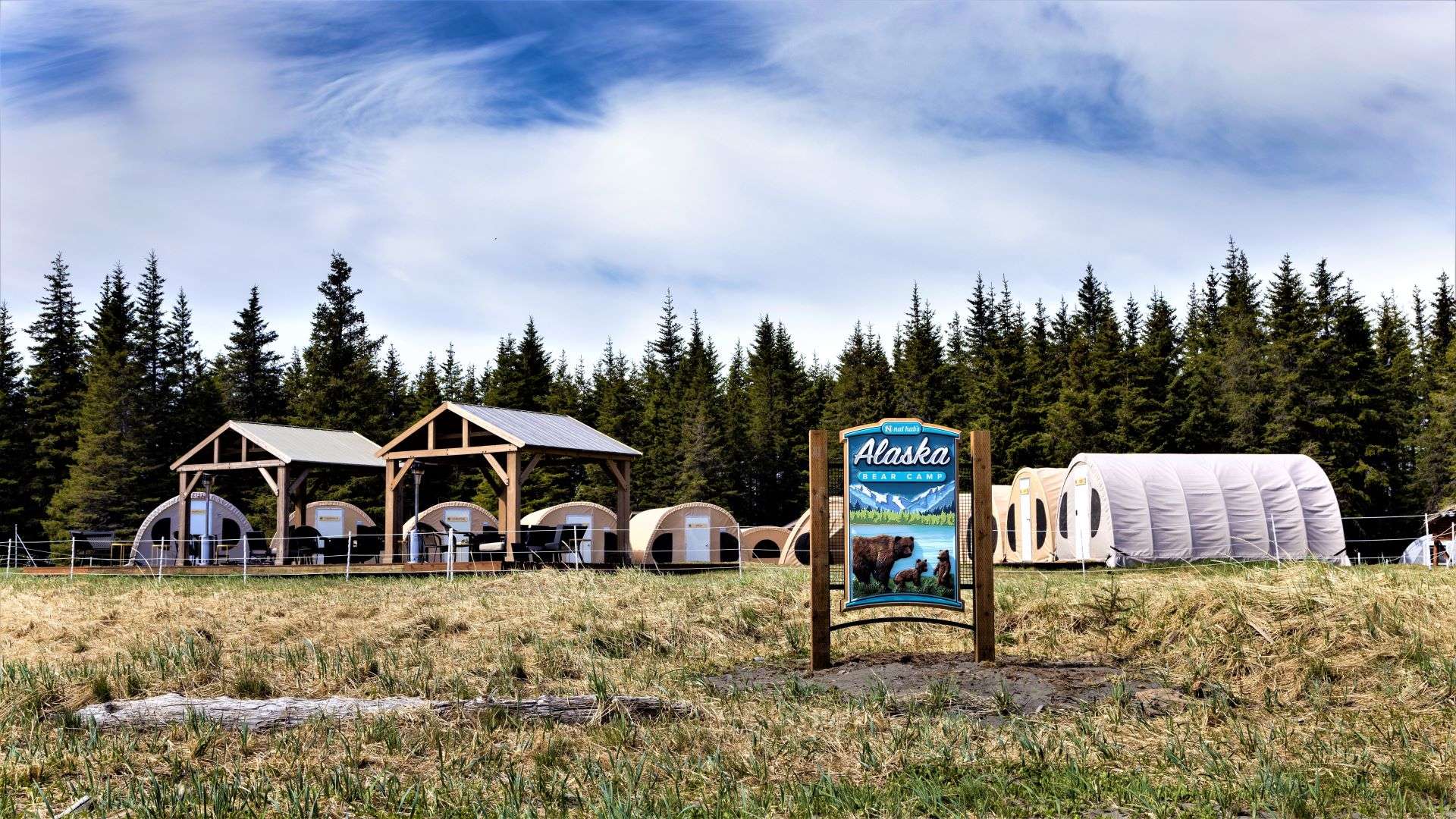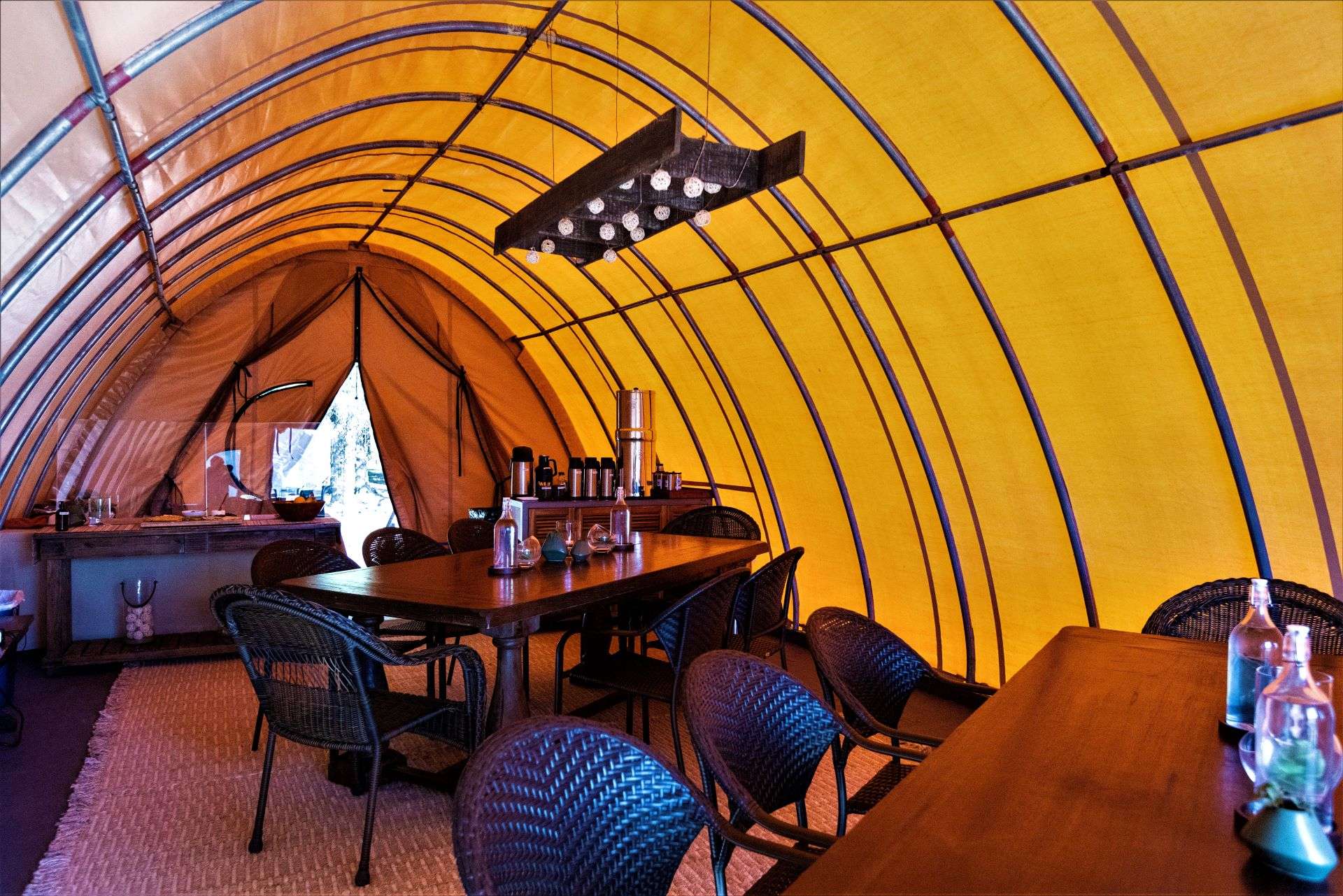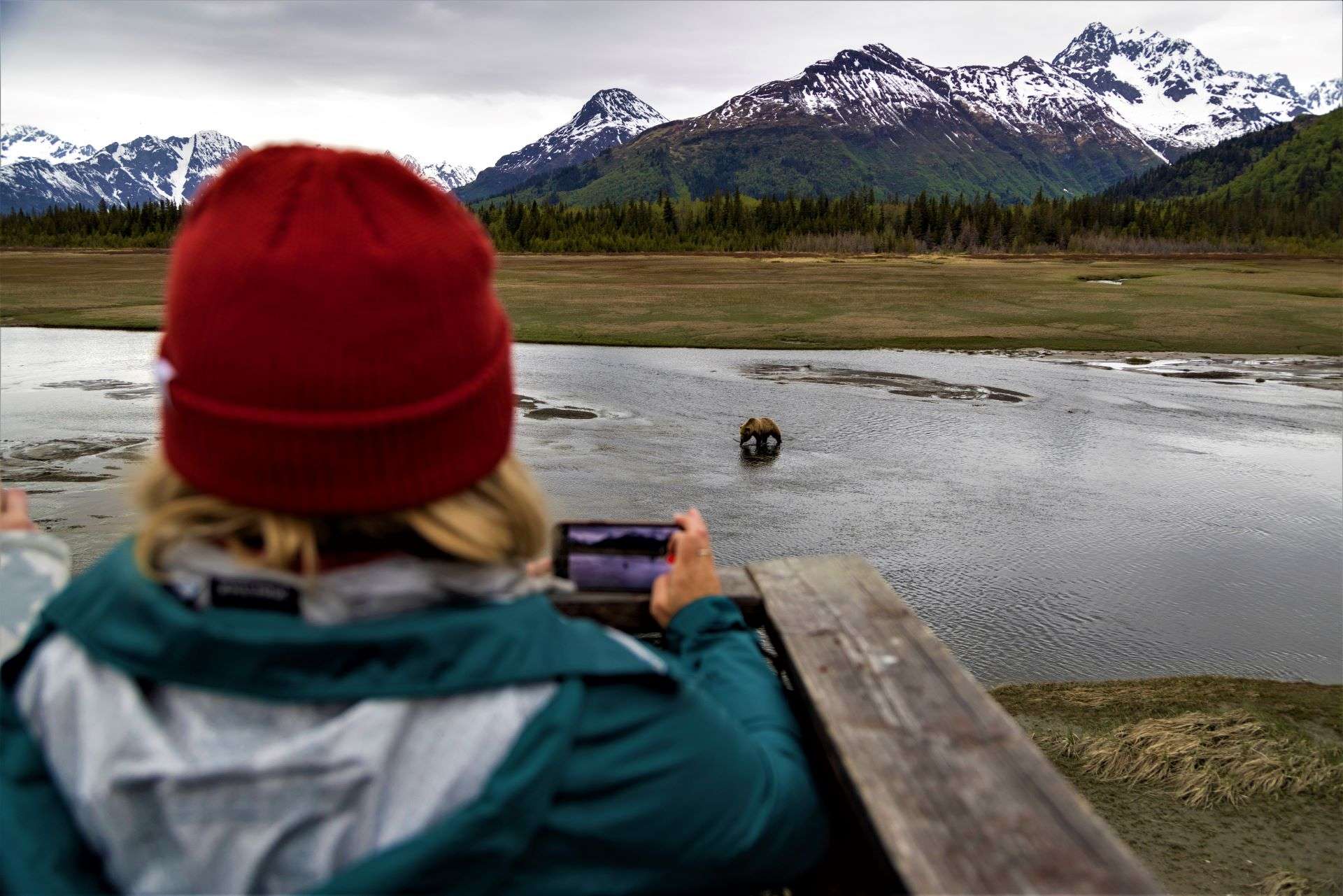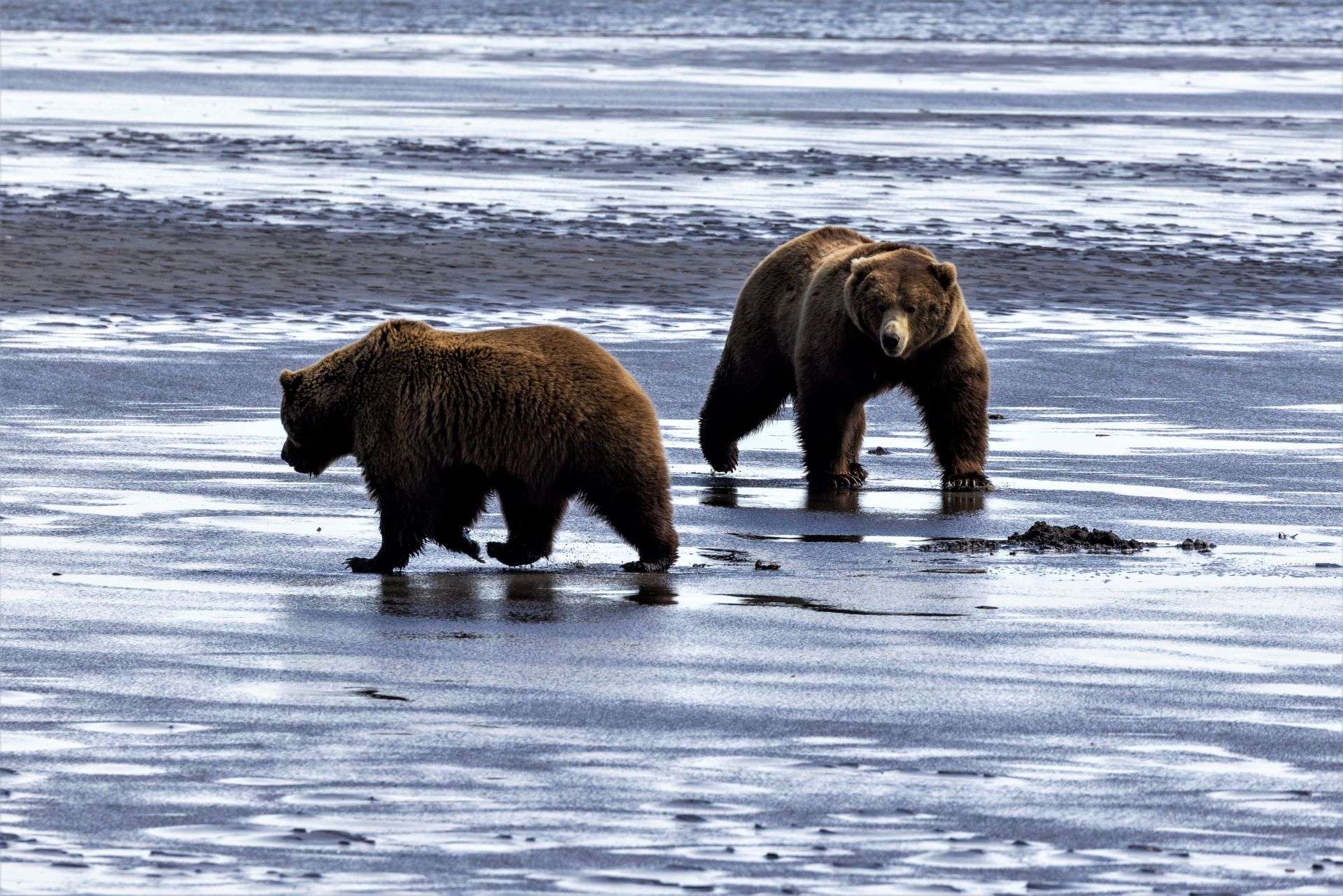Soar by bush plane over Cook Inlet, active volcanoes and massive glaciers en route to a pristine beach in the Alaskan wilderness. Today, you’re headed to camp. Not the summer camp of your past (no swim test required!), but exhilarating all the same. Our new Alaska Bear Camp is set on an empty stretch of sand, where tented cabins blend seamlessly into the natural backdrop of forest and mountains. There are no people (other than those on the plane with you) and your Expedition Leaders. Your closest neighbors are the incredible brown bears that live here.
Sound like your kind of camp? Us, too! That’s why we’ve created this profound adventure for those who crave complete immersion in the rugged wilderness—a place you can sit quietly and observe brown bears as they go about their lives without distracting them or harming their habitat. Alaska Bear Camp is for those who seek life-altering moments in the wild, where we are one with the natural world, observing these magnificent beasts as they play with their young, grab spawning salmon in their jaws and amble through the meadow. While other trips may introduce you to Alaskan bears from a distance, this is a total immersion with brown bears from our private, fly-in wilderness base.
Intrigued? Read on for all the details of Alaska Bear Camp!
Where Is Nat Hab’s Alaska Bear Camp?
Our sustainable bush camp is set on an enclave of private land surrounded by Lake Clark National Park in Alaska—one of the world’s most renowned bear-viewing destinations. This peerless location in critical bear habitat sits on an old homestead on the ancestral land of the Dena’ina people. These 4 million protected acres of intact ecosystem sit at the headwaters of the largest sockeye salmon fishery in the world.
Here, at the intersection of the Alaska and Aleutian ranges, and accessible only by boat or plane, Alaska Bear Camp provides the ultimate, immersive bear-viewing experience. And come the bears will, thanks to season-long food sources in the camp’s vicinity, drawing these massive coastal creatures right to our doorstep.

What Are the Accommodations and Dining Like at Camp?
Our guests stay in unobtrusive tented camps, which sit lightly on the land. The tent cabins are set on a raised deck in front of the forest, facing Cook Inlet for sublime views. Each custom WeatherPort tent provides solid protection against the elements (and has a propane space heater), so you can be assured a warm, comfortable night’s rest. Tents have a solid door and hard floor, as well as solar-powered lights. The enclave of tents is further protected from bears and other wildlife by an electrified fence that surrounds the entire camp.
Tents come with two beds (which can be joined together to make a king) adorned with cozy comforters, pillows and plush throws. There’s a writing desk, too, and you’ll be glad to have a space to journal about all those incredible bear moments! Cameras and phones can be charged in the dining tent. Men’s and women’s bathhouses have hot showers and modern composting toilets (there’s also a nighttime porta-potty in each tent).
All that invigorating outdoor time is sure to work up an appetite, so we’ve made hearty dining a priority at camp. We serve all meals in the communal dining tent, where we also encourage socializing with like-minded wildlife lovers and listening to guide presentations. Our resident chef whips up impressive meals that draw from fresh, locally sourced ingredients, including fish and seafood straight from regional waters. You’ll soon understand why the brown bears of Cook Inlet are so well fed!

Where and How Do We See the Bears?
Now, to the main event: viewing Alaska’s mighty brown bears! These coastal versions of the interior grizzly bear (same species, Ursus arctos) are North America’s largest land predators, with adult males weighing up to 1,500 pounds.
Look closely as we soar into camp by bush plane—you may glimpse bears in the meadows and along the shoreline, as we come in for a landing and taxi alongside the beach. Once you’re settled into camp, our bear-viewing opportunities are both planned and spontaneous. We have two camouflaged viewing platforms, one elevated for a territorial view, that enable us to see bears both nearby and at a distance. Often, we can watch them right from camp, from safely behind the electrified wires.
We are ensured some of the best and most consistent bear viewing in Alaska thanks to the season-long availability of food. The bears emerge from their dens each spring to a diet of sedge grass, which is surprisingly high in protein and contributes to the bears’ rapid growth. Summer brings the region’s famous salmon run, a source of fat that enables the bears to survive a long winter.
The bears are satiated by this steady feast, making us humans just a part of the periphery of their lives. We can walk safely in their midst on guided outings, sometimes observing them from just a few feet away. If you listen carefully, you can hear them chewing their food and communicating with each through woofs, purrs and growls.
Because we just can’t get enough bear action, we also visit adjacent Lake Clark National Park for variety. Your seasoned Expedition Leaders—seasoned bear naturalists—will coach you in respectful “bear etiquette” that will ensure your safety as well as a low-impact presence on the animals.

Bear Camp for Change
You may wonder how visiting brown bears’ natural habitat is contributing to their conservation. Like all our Nat Hab trips, we’ve taken great care in researching, planning and executing a carbon-neutral departure that not only explores nature, but protects it.
Bear Camp Manager Caprice Stoner understands that the bears in the camp’s vicinity are most comfortable with humans when they know what to expect. Standardized behavior from viewing group to viewing group offers the bears predictability instead of the sense of a threat. With just 14 guests at a time, Nat Hab’s private Bear Camp makes for respectful, low-impact bear observation, particularly in an age where the practice has become more popular, especially in the Chinitna Bay region of Lake Clark National Park.
The camp sits adjacent to a designated Critical Wildlife Habitat, closed to humans from May 1 to August 31, ensuring a protected area where the bears can eat, mate and nurse their babies without interference.
Read more about Bear Camp’s conservation ethos and meet Bear Camp Manager Caprice Stoner.
Learn how climate change is affecting coastal brown bears and how they’re eschewing salmon in favor of elderberries (and why that’s not a good thing).
Back to that bush plane—from the moment we touch down, you’ll be immersed in true Alaska wilderness, which is also true brown bear habitat. We invite you to join us for this one-of-a-kind camp experience.

All photos © Court Whelan.

